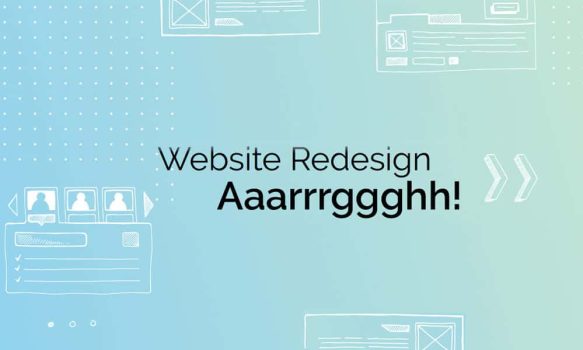Building a new website is like giving birth; you are never really ready for it, everyone you know has an opinion or story to share about their experience, how you envision the process is nothing like reality, but once you are finished you think it is perfect!
Taking this into consideration we wanted to share our experience with you, so that we could perhaps help you to avoid some of the
“missteps” which we made.
It is important to let you know that we are not looking to discredit or promote any website provider, nor is this meant to be a comprehensive “how to guide” on redesigning a website, there are enough of those out there already. Your website is often the first thing prospective families see before they come to visit your school. They use it to learn about the school and hear its story. It is the first step in the admissions journey and therefore a redesign needs to be carefully planned.
Some of the big questions which need to be asked before redesigning a website are:
- Why are you redesigning?
- What is the purpose of your website?
- Who is the target audience of your website?
- What is your budget?
- How and when will you launch?
In our case, we were redesigning because our website was non-responsive to multiple platforms. It did not capitalise on best practices, it was susceptible to hacking and did not take advantage of current SEO rules. But, it was also not total rubbish and so we used it as the starting point for the redesign. We looked at our most trafficked pages, examined our bounce rates on a variety of pages, and most importantly solicited feedback about the site from both prospective and current families.
We knew we were developing a website primarily for marketing purposes and so our target audience was going to be prospective families. Any portals or information we could provide current families was a bonus but not a motivator. Parents in the international school world have choices and limited time so we needed our website to help them make the choice to at least pay us a visit. This meant we really had to understand our marketplace and not just our dream parents but the reality of who is coming through our doors.
Information which we gathered from prospective families indicated that word of mouth, the internet and our website were how many of them learned about our school and decided to visit. Based on this we were able to get an adequate budget from our business office which allowed us to consider a variety of website providers.
Setting the timeline and execution of the launch is an essential part of the process. It is imperative to stay realistic, be clear about each step, who is responsible for what, and most importantly start early. Things like photo taking, staging and gathering, and text-writing take longer than you can imagine and if you wait too long you might end up with too many images from the same activity. This was a bit of our dilemma with some of the video footage we had. Also, be sure to check your timeline with the website provider to avoid holiday schedules that non-educational institutions might not consider. We tried launching at the end of May, before the end of the school year, only to discover that half of our team was on vacation.
Once you and your team have answered the questions and set the timeline, it is a bit like Christmas as you begin to develop your wishlist. But just unlike Santa, no website provider can really truly give you everything you wish for and stay within your budget. We then created our ““need to have” and “want to have” lists. This was negotiated within a bigger group to make sure we were not suffering from tunnel vision. Here too, it is important to keep your audience in mind and ensure that your wants and needs are aligned with theirs. Shortened time on pages, limited English ability and cultural differences all play a role when determining what aspects of your school you want to highlight on which page and how you want to explain them. Take a look at some of the other sites which the company has created but try to avoid coming into the process with too many predetermined ideas. This can stifle the creativity of the designer as it is not their goal to copy other sites.


With all of this information in mind, we determined which website provider we wanted to work with. We quickly found out that great communication with the service provider can make or break your experience. It must be clear, timely and interactive. You know your marketplace better than they will and in the beginning it is worth the time to tell them the story of your school and what sets you apart. It is just as imperative that the company building your website get an understanding of your target audience. Build a relationship with them much like you would with a prospective family.
Make sure that you and they understand what is expected of them and of you and at all costs avoid assuming that things are explicit. Vagueness is the enemy of the process which is exacerbated if there is a time zone difference between you and your website provider. We struggled with this more than once.
During the pre-launch phase, don’t be afraid to gather feedback but also remember that even post-launch you have flexibility to change things. Ask as many different people as you can, ask as early as you can, and as often as you can. Check out the different webinars on best practices and continue to ask your website provider for tips. We launched and two days later our website provider published an article on “how to design the best admissions landing page”, needless to say, ours was changed post launch.
When you launch be sure to make a big deal out if it. You have spent considerable time and energy on this project, be loud and proud, because tomorrow you will be making updates and changes.
Written by Katie Rigney-Zimmermann and David Perkin
Click here to read the article on the International Admissions Bulletin website.



![[eBook] Guide to Website Redesign Planning](https://www.schoolhouse.agency/wp-content/uploads/2021/08/eBook-Guide-to-Website-Redesign-Planning.jpg)

